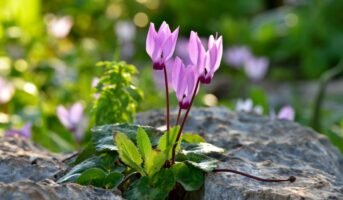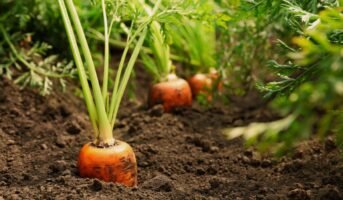Potted plants can be kept in the living room, balcony, study, kitchen, window sills, patio, or garden. As part of an indoor design, group them in a corner to create a cheerful ambience.

See also: Flower pot design ideas to add greenery to your abode
What is a potted plant?
Potted plants refer to plants that are planted and grown in containers rather than in the ground. A houseplant, sometimes known as a pot plant, potted plant, or indoor plant, is an ornamental plant that is grown indoors. Potted plants can be kept in residences or offices, adding a green element and enhancing the décor.
Benefits of potted plants
Keeping potted plants at home helps bring a touch of nature indoors. A blooming plant is a reflection of our health and well-being. Research shows that green spaces can reduce mental fatigue, increase relaxation and improve cognition. Gardening is therapeutic. Plants boost moods, productivity, concentration and creativity and reduce stress and fatigue. Plants, such as the peace lily, spider plant, aloe vera, snake plant, areca palm and rubber plant, have amazing air-purifying qualities, which absorb toxins, increase humidity, and produce oxygen. Planting in pots allows a gardener to easily change the plant’s location to best-suited conditions. Potted plants provide the flexibility to shift and arrange them as per the available space.
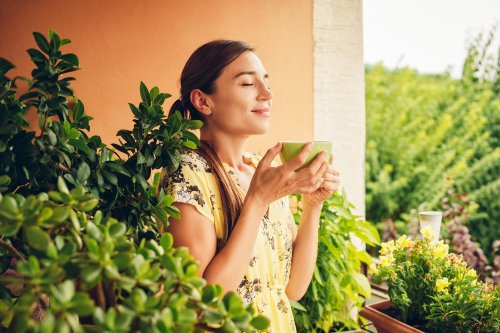
See Also: Fern plants: Facts, uses, and medicinal values
Picking the right pot
The right pot for a plant assists in its growth. Pick a pot as per the plant’s size and expected growth. Select a container that is, at least, 25 percent of the expected height of your plant. This ensures enough space for the roots to grow. Outdoor pots should be at least 12 inches wide and 10 inches deep. The bigger the pot, the more space there is for the roots. Deciding the type of plant can help determine the pot size. Always buy pots with drainage holes. If keeping it indoors, place it on a tray. Consider the available space when choosing the size and shape of the pot. Pots are available in various shapes, sizes and materials, such as ceramic, terracotta, fibreglass, stone, wood and plastic. Terracotta pots are ideal for growing potted plants as they are porous. Plastic and fibreglass pots are good choices for plants that need constant moisture and watering. Since they are waterproof, they hold extra water and are ideal for water-hungry plants. You can also opt for recycled bottles, tins, jars or buckets to pot your plants.
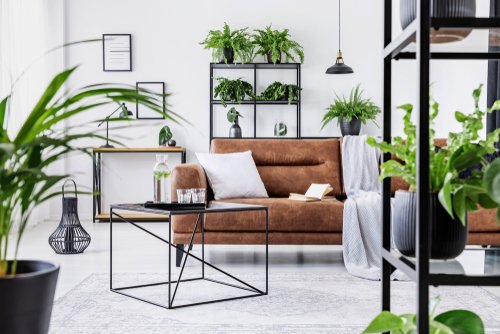
See also: How to choose pots for indoor plants?
Soil for the potted plant
The soil should be mixed with sufficient amounts of compost and manure. The soil mix for a new plant must be mixed with a sufficient amount of compost, oil pellets for nitrogen, phosphorous and potassium and manure. Over time, they would need fertilisers/nutrients periodically. Compost generated from home waste can provide organic matter to the soil, while sand and cocopeat, sourced responsibly, are great soil aerators. Plants growing in containers need more fertiliser than those in the ground.
See also: Different types of fertilisers for indoor plants
Placement of potted plants
Always know the right place to keep your plant, whether in a sunshine or semi-shaded area. Select plants depending on the sunlight you receive in different parts of your home or office. All plants need light for survival. Ensuring that your potted plants get the right amount of light is crucial for their growth. For both indoor and outdoor containers, group plants with similar light requirements.

How to water potted plants?
Water and good drainage are important for thriving potted plants. Overwatering can kill potted plants. As a general rule, try to water less often and more deeply rather than light and frequent watering. Watering deeply would encourage plants to develop strong roots and helps in better absorption of nutrition. Pots must have drainage holes so that plants are not left sitting in excess water. Always keep a dish under the pot to collect extra water. Remove this excess water after about an hour to prevent root rot and excessive sogginess. Before watering, check soil moisture by poking a finger into the soil. Water only if the soil feels dry.
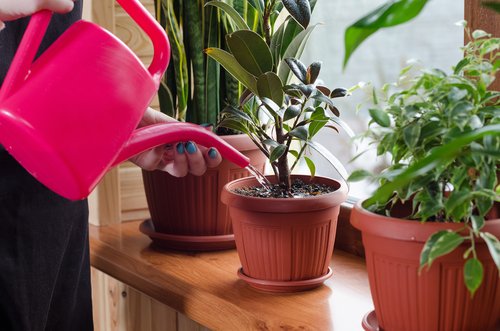
Low-maintenance indoor and outdoor potted plants
You don’t need a lot of time, space or light to keep a few potted plants at home. There are plants, which prefer low light and infrequent watering. If you live in a home, which has less natural light or prefer plants, which are low maintenance, here is a list of houseplants to choose from.
all about: caladium bicolor
Indoor potted plants
- Spider plant
- ZZ (Zamioculcas Zamiifolia) plant
- Snake plant
- Peace lily
- Rubber plant
- Money plant
- Fern
Low–maintenance outdoor potted plants
- Jade
- Palm trees
- Dracaena
- Monstera peru
- Aglaonema red
- Anthurium
- Zinnia
- Lantana
- Basil
- Ficus
Potted herbs and vegetables
Several herbs and vegetables can be grown in pots easily. Most vegetables need full sunlight or partial shade. Indoor vegetable gardens can be set up on the balcony or on the window where one gets adequate sunlight for four to five hours a day. You can easily grow spinach, methi, lettuce, mint, parsley, rosemary, thyme, oregano, lemon balm, lemon grass and other vegetables. Here are a few vegetables and herbs that a beginner can easily grow in pots.

Coriander
Sow coriander seeds in a pot on a sunny window sill. Don’t overwater the plant. Soon you’ll see little shoots of coriander that can be plucked and used.
Chillie
It is easy to grow chillies with proper sunlight and moderate watering. Medium to large-sized pot is apt for planting chillies. Remove the seeds from a dried red chillie and sow them. Allow them to germinate in a seed tray before transplanting the saplings into a bigger pot when they reach a 6- to 8-leaf stage. Chillie plants grow best in a good amount of sunshine.
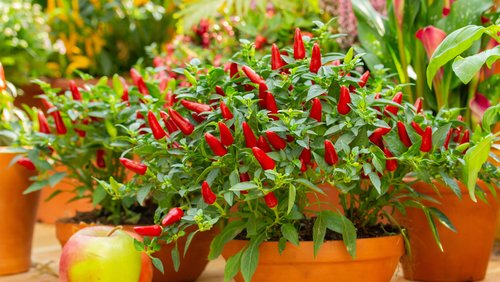
Curry leaves
Curry leaf plants need abundant sunlight. Keep it under direct sunlight for most of the year except in peak summers. While seeds work well, stem cuttings (about 3 inches long) are the easiest way to plant them.

Brinjal
This plant requires moist soil and lots of sunlight. Seeds germinate quickly at a warm temperature. Brinjal plant grows best in well-drained, sandy-loamy or loamy soil. When growing brinjal seeds in pots, using a dark-coloured container is advisable to absorb additional sunlight.
Spinach
It is easy to grow spinach on the balcony or a windowsill. Opt for wide, rectangular, six to eight-inch deep pots. It needs to be drained of rich soil. Avoid harsh sunlight.
Potted plants: Caring tips
- Choose a plant according to the light conditions available in the room or the garden area. Sun-loving plants like roses would not survive Shade-loving plants will burn in an over-sunny spot. Choose the correct plants as per the light conditions. Philodendrons or Boston ferns are ideal for areas with low light.
- Do not let plants collect too much dust on their leaves. Once a month, use a wet cloth and lightly wipe down the leaves on both sides.
- Keep right-sized saucers beneath pots. The saucer diameter must be equal to the diameter of the top of the pot.
- It’s easier to grow plants in large containers as they hold more soiland help it stay moist longer.
- Group several pots to create an interesting display. When you have several planters, use similar materials or colour themes.
- If you wish to mix up different types of plants, choose plants that prefer the same light conditions.
- Keep an eye on the plant’s health. Neem oil is suitable for a variety of insects, including aphids, mealybugs, whiteflies, thrips, fungus gnats and other garden pests. Neem oil is also safe for beneficial insects, like ladybugs, pollinators and earthworms.
FAQs
What is the most popular potted plant?
The most popular potted plants are Tulsi, Croton and Anthurium. Golden Pothos, Lucky Bamboo, Snake Plant, Jade, Aloe vera, Peace lily and succulents are also preferred by people.
Which potted plants can be grown in shade?
Areca Palm, Syngonium, Peperomia, Song of India and spider plants can be grown in shade.
Which potted plants can be kept in the living room?
Depending on the sunlight and the space available, you can grow Boston fern, Money plant, Areca palm, Aloe vera, ZZ plant, spider plant and weeping figs.
Purnima Goswami Sharma is a freelance writer based in Mumbai, who has been contributing to various newspapers, magazines and portals for the last two decades. Besides being a research writer for various TV shows, she has been a visiting faculty at SNDT for Communication Skills. She hold a master’s degree in English Literature from Mumbai University and a diploma in Communications and Journalism. She writes on diverse subjects like real estate, interiors, education, lifestyle, health, entertainment and environment.
Email: [email protected]

